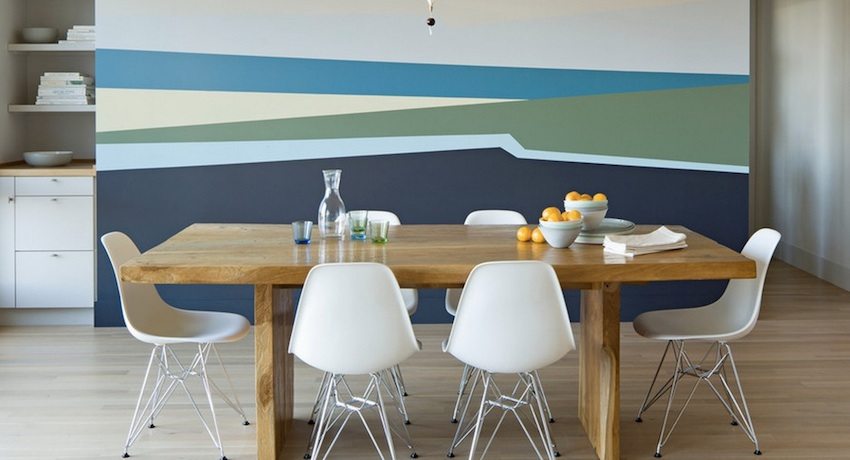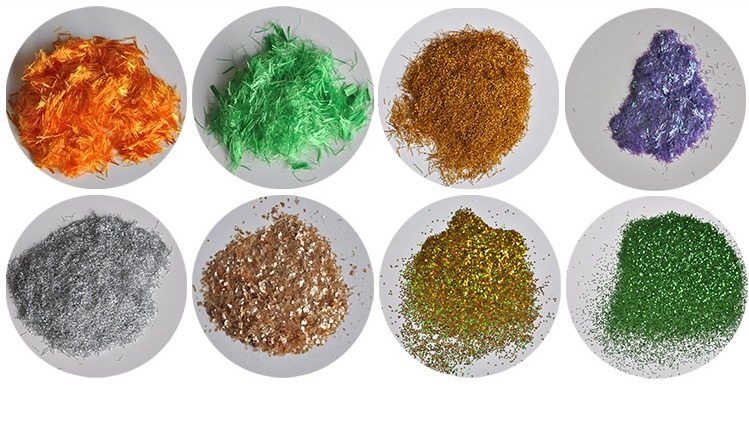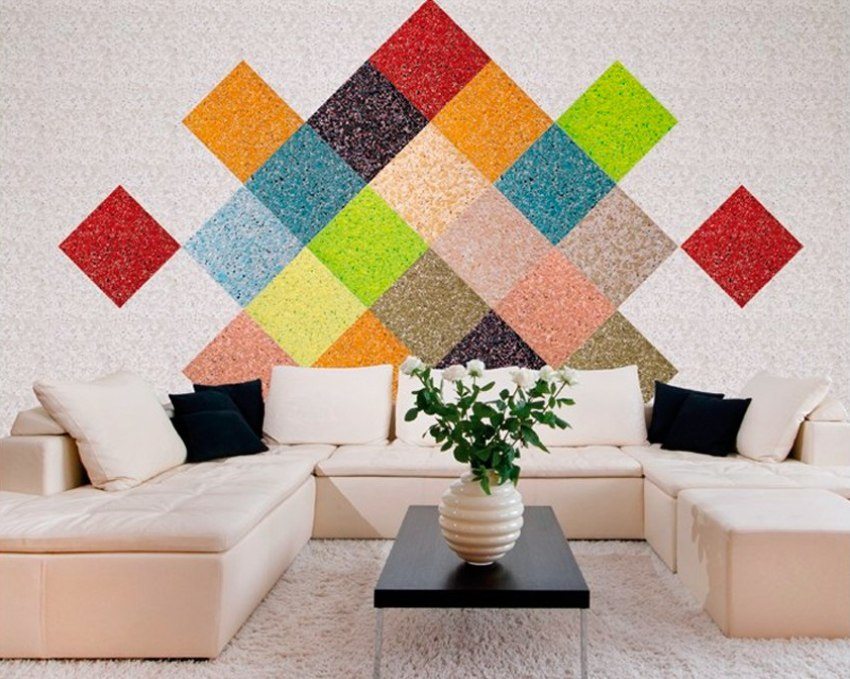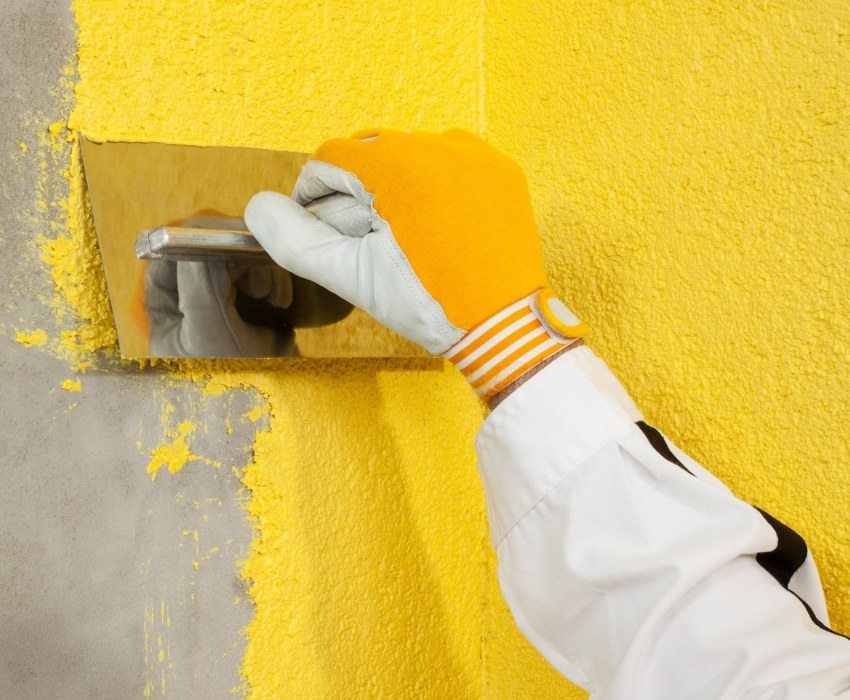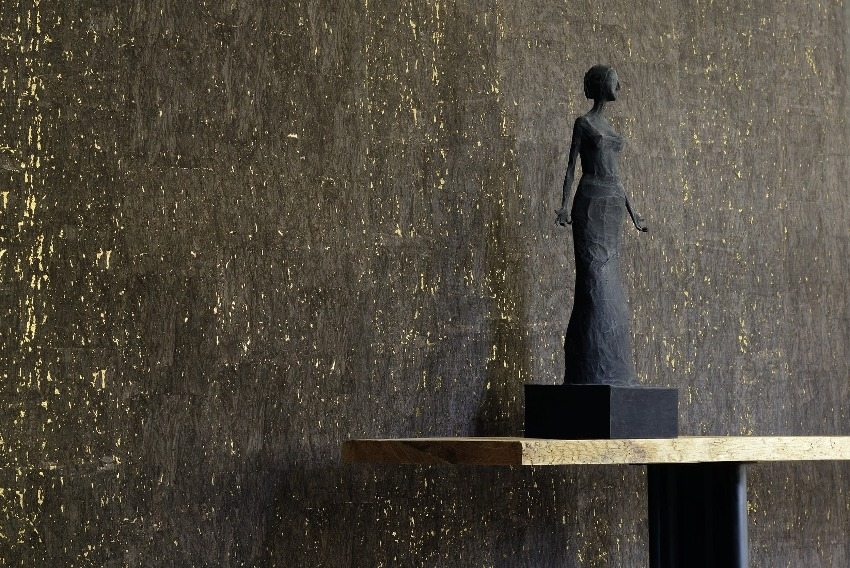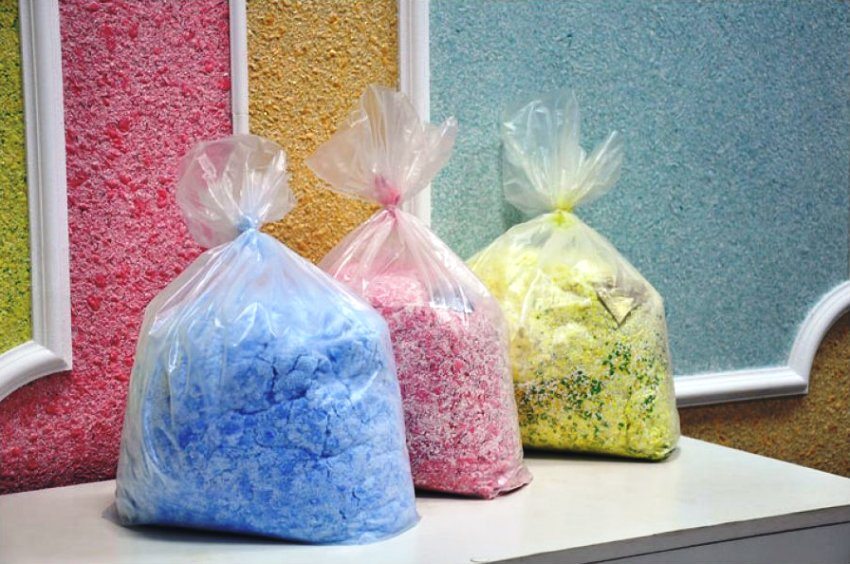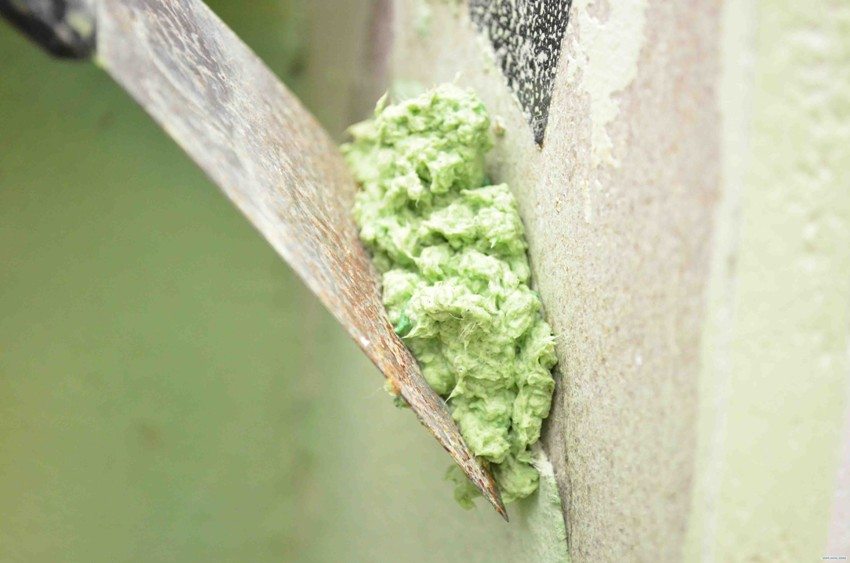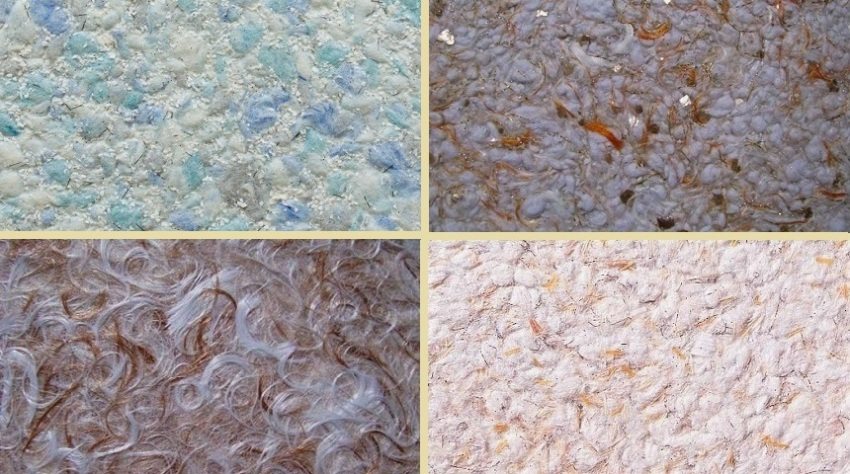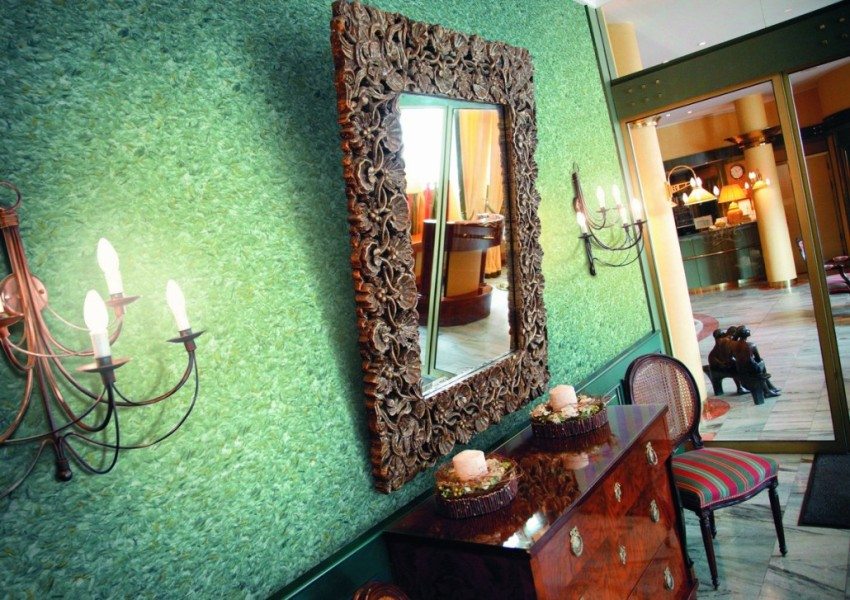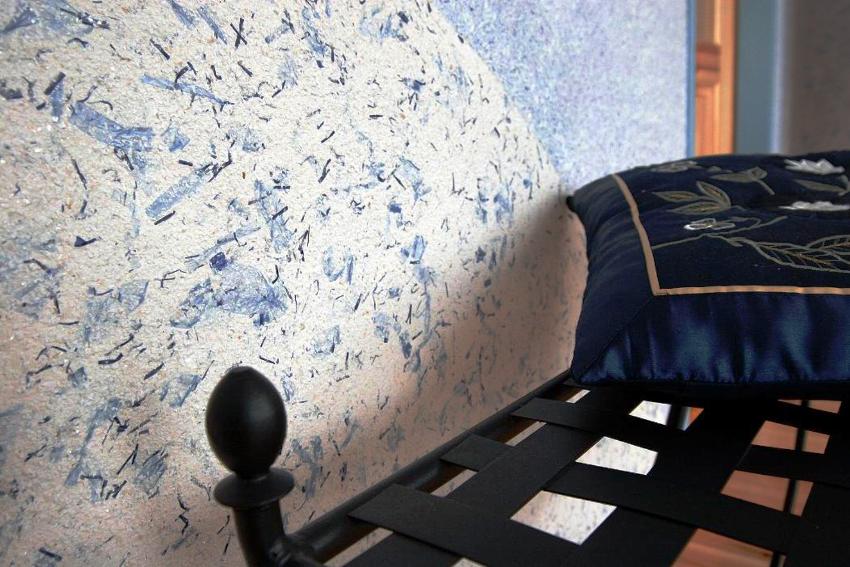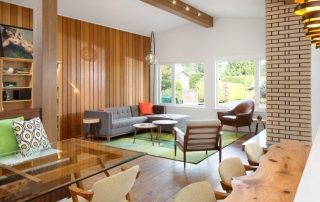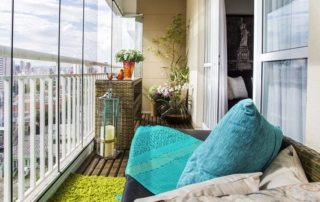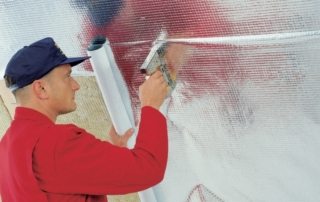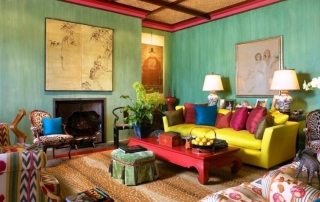Starting repairs in the house, you can make liquid wallpaper with your own hands. Making such a mixture is a simple task that can be done from scrap materials. Do-it-yourself liquid wallpaper looks great in any room. The video of the stages of work demonstrates all the subtleties and features of the process, which allows you to independently make and apply the resulting composition without problems.
Content [Hide]
Main characteristics of liquid wallpaper
Liquid wallpaper are a kind of solution intended for application to the wall for decorative purposes. They usually include:
- natural fibers;
- special water-based dye;
- binding base;
- decorative small chips (made of quartz or marble);
- mica sequins;
- multicolored flocks.
A coating of liquid finishing material is used for interior decoration. With their help, you can create a unique design in almost any room. Compared to regular wallpaper, they have some advantages:
- do not require cutting;
- there is no need to level the surface down to a millimeter;
- no need to observe the correct location of the joints;
- perfectly fill any corner of the room.
It is easy to trim complex design structures with such material - two-level ceilings, bay windows, arches and other architectural elements. It is easy to apply to door or window slopes, which, when using ordinary wallpaper, require the selection of suitable pieces, accurate measurement, trimming to create corners.
Liquid wallpaper (video)
DIY liquid wallpaper. Paper making
Since purchased mixtures for applying such a finish are quite expensive, you can use improvised means and make liquid wallpaper with your own hands. A video of this process demonstrates in detail all the subtleties of creating a mixture and applying it to the wall. The recipe for the base of the composition is quite simple, but additional ingredients may be included to obtain the desired result. In general, the scenario for making such a material from various improvised means is approximately the same.
How to make liquid wallpaper (video)
Waste paper wallpaper
In this case, the following components will be required to make a liquid wallpaper material:
- Paper.Any unnecessary magazines, old newspapers, used stationery.
- Dye. Any building color will do, if necessary, you can use several shades.
- Glue. PVA will cope with this task.
- Bonding base. Gypsum or Bustilat.
- Supplements. You can use mica powder, stone chips, pieces, trimmings of various threads, small tree bark, etc.
Stages of making liquid wallpaper with your own hands
Existing waste paper must be shredded (torn, cut). With small pieces, the process will go much faster. Then the paper is dipped into any dish where further mixing will take place and filled with water in a ratio of 1: 5. A few hours later, after the material is completely soaked, it is mixed with water using an electric drill and a special mixer nozzle. Add color and glue to the resulting homogeneous mass and mix thoroughly.
The finished mixture should stand for about half a day in a securely closed plastic bag. Then the wallpaper paste is taken out and kneaded by hand. Before applying the finished composition to the wall surface, it is necessary to add gypsum to it and gently mix again. The hardening time of future wallpaper depends on the amount of gypsum added, so you do not need to overdo it with its addition.
Useful advice! If the resulting mixture does not fit well and peels off, then add a little more glue to it. If the wallpaper cracks, then you can increase the amount of reinforcing additives.
DIY liquid wallpaper. Made from various fibers
Blend base
Any fiber is required for this type of mixture. It can be cotton, cellulose and even ordinary cotton wool. To finish a large area of material, it will take quite a lot, so it must be prepared in advance. Any material used must be carefully crushed. To do this, you can use scissors, a drill with a mixer attachment.
Useful advice! When using cotton wool as the main material, cover the container with the material to be crushed with a drill. This is necessary so that the cotton wool does not fly in all directions.
Also for such work may be suitable: synthetic winterizer, wool, flax. It is possible to use the remnants of various threads made of silk, cotton or synthetics. For these purposes, you can use the remnants of any yarn, dissolve old, long-unused sweaters or sweaters. Multicolored strings are quite difficult to grind, but the effect of such an additive will be simply amazing.
Binder additive
To adhere the fibrous structure of future wallpaper, you can use any adhesive materials. PVA, wallpaper glue and ordinary acrylic putty will do. Using acrylic putty in the manufacture of liquid wallpaper with your own hands, you can get a result that is resistant to external influences. The dried mass is resistant to various external and physical influences over time.
As a dye, you can choose a color intended for water-based paint. It should be added to the wet mixture, stirring thoroughly. If the walls are planned to be made heterogeneous in color, then after obtaining the main shade, you can add a second portion of the color scheme, but do not mix much, so that when applied, stains and darker blotches are obtained.
Mix making
The material selected as a base is placed in a prepared container, where the binder is added in a ratio of approximately 1: 1. After that, decorative components are added, and the composition is kneaded until a homogeneous consistency. If the mixture is rather thick, then you can add water to it. Ripening DIY liquid wallpaper, occurs within 5-8 hours. This time can be used to prepare the surface of the walls.
Rules for applying liquid wallpaper
Before finishing, the walls must be cleaned of old wallpaper, if necessary, putty and primed well for high-quality adhesion of the material to the surface. Applying a liquid wallpaper composition is a technically easy process. It is performed by the type of plastering using a trowel.
The wet composition is applied to the surface of the wall and gently, with sweeping circular movements, is gradually leveled. Excess wallpaper protruding from the slopes can be cut off after it is completely dry. After the glue has begun to slowly set, it is worth walking over the surface with a plastic trowel or trowel, constantly wetting them with water. This is necessary to create a smoother wall without unnecessary roughness.
Even a novice builder can cope with such work, since it is impossible to spoil such wallpapers. Even if something does not work out very well, the already applied wallpaper paste can be removed and reapplied.
How to apply liquid wallpaper on walls (video)
Repair of liquid wallpaper
If necessary, self-made liquid wallpaper can be repaired or restored damaged areas. For this, the material is soaked directly on the wall and carefully collected in a prepared dish. You will need a spray bottle and a spatula. The new mixture is easily prepared on the basis of the old removed from the wall. A little water, a binder is added to it and reapplied to the cleaned surface.
